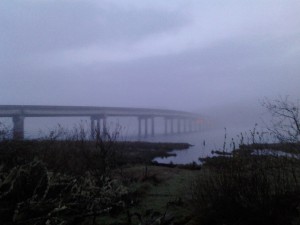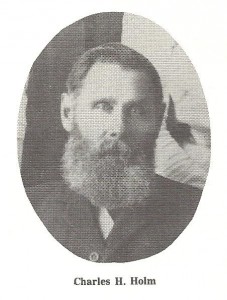The Brief Life of Stanley, Washington
Ever hear of the town of Stanley, Washington? No? Well, don’t feel bad. It had a lifespan of only six years but in that brief time was the springboard for ambitious plans. The following article was found at random in The Chehalis Nugget, June 4, 1897:
STANLEY TOWNSITE SOLD
City of Boom Days to be Converted Into a Chicken Ranch
“Captain John Riddell has sold to C.C. Rosenburg the townsite of Stanley, Pacific county, in which a number of Chehalis men once owned lots, and it will be converted into a cattle and chicken ranch. The purchase price is $2500. Capt. Riddell acquired the land under a mortgage given him by Chas. Holm, the original owner, who sold it to the Stanley Land and Improvement Company. O.B. Gentry and T.D. Yerrington, the latter a prominent railroad man of Nevada, were the prime movers in the scheme, and Senator Stewart of Nevada was a stockholder. A wharf was built, four or five buildings erected, including a hotel, and considerable clearing done.”
“It was proposed to make Stanley the terminus of a railroad which should run up the Cowlitz river valley to its headwaters, where anthracite coal beds are known to exist, but not a spadeful of dirt was ever turned in the construction of said road. Lots were sold for as high as $500, and the townsite at one time was considered worth at least $500,000. Over $7,000 was taken in by the company on sales of lots under contract, but by the time the final payments were made the company was unable to give a clear title to the lots, as the original mortgage had never been taken up. Suits were instituted by the purchasers of lots for their money, but the company escaped judgment, as it never had been legally incorporated.”
“J.J. Caffee, a neighboring rancher who had invested his all in Stanley lots, went insane over the failure of his castles in the air to materialize, and bitter disappointment affected the mind of Holm, who today, with his family, keeps lonely vigil over what was once his homestead, and refuses to believe that he has lost his title to it.”
“As a ranch Stanley townsite has few superiors in the county. Its 54 acres of tide land were diked in by the original owner, and the boomers cleared and grubbed a considerable portion of the upland.”
Stanley was located on the Stanley Peninsula, on the mainland just east of Long Island, home of the current Willapa National Wildlife Refuge. The townsite was about five miles northwest of Naselle and very close to where present day US 101 crosses the Naselle River [pictured].
Charles H. Holm left his native Finland in 1863 and worked as a sailor for eight years before settling in the Naselle area. He died in 1921. More information on the town of Stanley can be found in Nasel 1878–Naselle 1978 : the Naselle Centennial Book:
“Charles M. Holm [elsewhere he’s Charles H. Holm] visualized a great seaport city at the mouth of the Nasel on Shoalwater Bay. He had sounded the depth of the Bay when he explored there in 1871, and he had determined the feasibility of deep sea ships crossing the bar to the Pacific Ocean. Holm then filed a claim on the adjacent 160 acres of government land as a site for his seaport city, Stanley.”
“The 1893 writers noted that Holm’s estimates were: ‘fully verified (by government surveys) … The harbor is an almost perfect one … The town of Stanley possesses all the natural requirements of a great seaport city and gives promise of a brilliant future. Its location is one of the finest on the coast.'”
“Stanley was to be the terminus of the Stanley, Cascade and Eastern Railroad, incorporated Nov. 1890. The company consisted of Holm, three U.S. Senators, a railroad president, a railroad supervisor-engineer, and a Lewis County banker. Holm gave two-thirds of his land tract for a townside. A hotel, wharf and several homes were erected and streets laid out.”
“The town was highly promoted as ‘The Seattle of Shoalwater bay,’ and in other equally glowing terms. But Stanley’s life span was brief. Shrewd promoters bilked stockholders, and Holm lost the suit and his investment. But he moved up river, established a farm and a home with a growing family.”
“Stanley, also known as Chetlo Harbor, was eventually put on the auction block. Some lots were sold for delinquent taxes, others were held by their Eastern owners for several years. The marketable timber was auctioned off in 1952 by Pacific County.”
The same site was later eyed for another scheme, a town named Napoleon. According to Larry J. Weathers in Place Names of Pacific County:
“NAPOLEON: Early real estate promotion on Stanley Point at the mouth of the Naselle River. Napoleon “The City of Destiny” was platted in 1910 by the Willapa Trust Company, F.A. Lucas, president. Portland promoters, with Spokane money, planned a city of 100,000 inhabitants to populate the barren townsite in 10 years. The Spokane Spokesman-Review reported that the promoters intended to outdo Denver’s ‘built in a night’ fame. Plans called for the construction of a paper mill, two sawmills, a box factory, and furniture factories to provide jobs. The name was chosen by the Willapa Trust Company. Some sources say the name was bestowed in honor of architect Napoleon de Grace Dion who had platted the downtown district of Raymond in 1904. It is also possible the name was suggested by Spokane investors who made a great deal of money at the Napoleon Mine on Kettle River (Colville Indian Reservation) in the 1890s. Stanley Point was the site of several real estate sales schemes. The earliest land sales were for lots in the Town of Stanley in 1890.”
The neighbor who “went insane” seems like an interesting character. Joseph J. Caffee, would have been around 60 in 1897, was a Union Army Civil War veteran who also used the name John Gaines. I found a curious reference to him in the Christmas 1891 issue of The Dalles Weekly Chronicle:
“J.J. Caffee, of Stanley, Pacific county, publishes a singular letter in the Pacific Journal, in which he informs his friends that should he be found dead, or disappear in some mysterious manner, they will find a letter in his safe that will tell them the cause. He states that his life has been threatened, and if anything happens to him he hopes his friends will bring the guilty party to justice.”
Now that is a story worth digging into! WSL does hold some issues of the Pacific Journal, Oysterville’s newspaper, but none in 1891.

